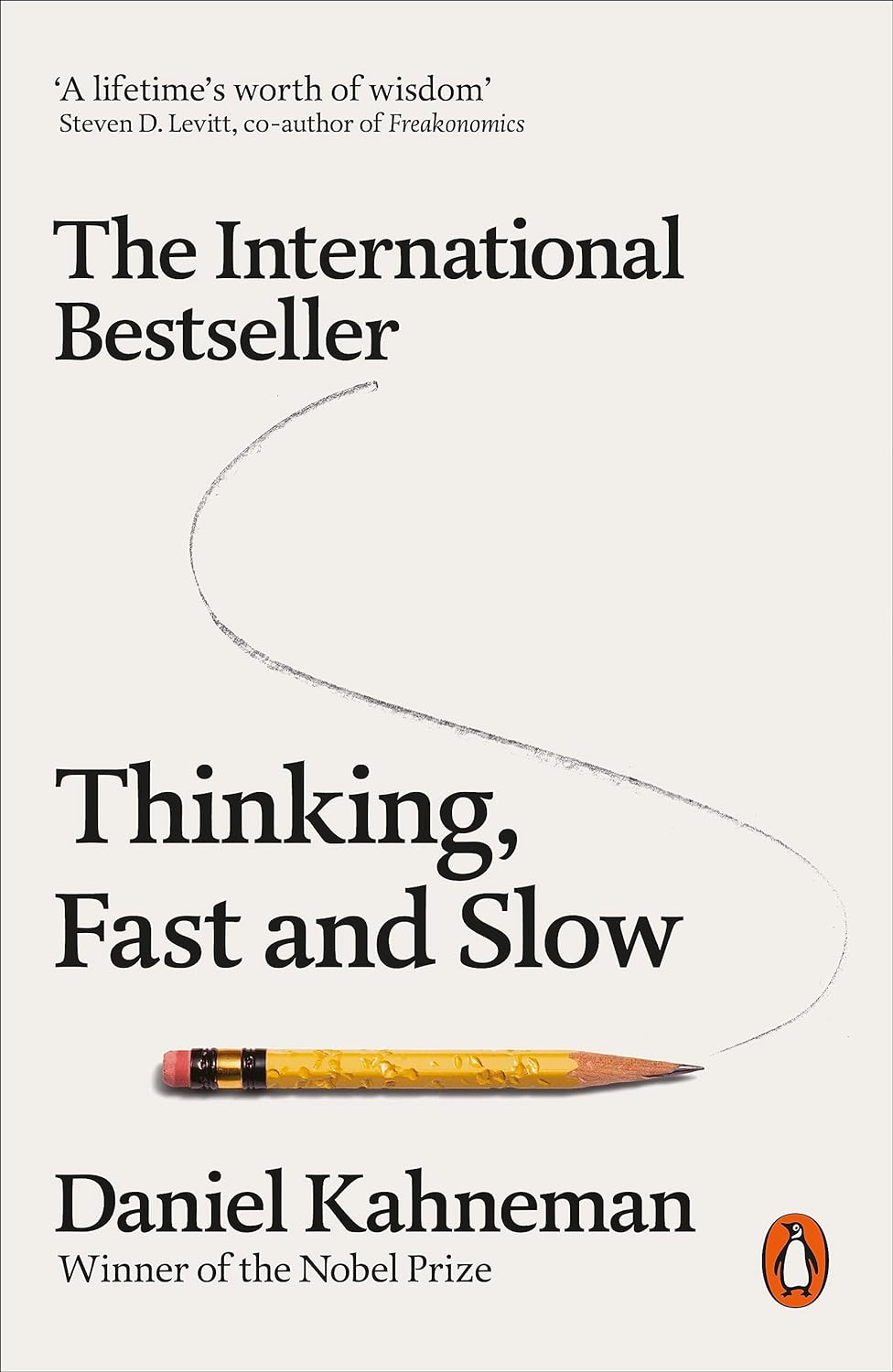Thinking, Fast and Slow by Daniel Kahneman is a seminal work that delves deep into the human mind, exploring the dual systems of thinking that drive our decisions and behavior. As a Nobel Prize-winning psychologist, Kahneman brings a wealth of knowledge and insight, making this book a must-read for anyone interested in understanding the intricacies of human thought. This review highlights the key concepts, strengths, and impact of the book, optimized to help you grasp its essence and significance.
Overview
Kahneman’s book is structured into five parts, each examining different aspects of our thinking processes. The central theme revolves around the two systems of thinking:
- System 1: Fast, automatic, and intuitive thinking.
- System 2: Slow, deliberate, and analytical thinking.
These systems interact constantly, influencing our judgments and decisions, often without us being aware of it. Kahneman illustrates these concepts with engaging anecdotes and robust research, making complex psychological theories accessible and relatable.
Key Concepts
- Cognitive Biases: Kahneman explores various cognitive biases that arise from our reliance on System 1. These biases, such as the availability heuristic and anchoring, often lead to systematic errors in judgment.
- Prospect Theory: One of Kahneman’s major contributions to behavioral economics, Prospect Theory, is detailed in the book. It explains how people evaluate potential losses and gains, challenging traditional economic theories that assume rational decision-making.
- Overconfidence and Optimism: The book delves into the human tendency to be overconfident and overly optimistic, which can lead to flawed decisions, especially in areas like finance and planning.
- The Two Selves: Kahneman introduces the concept of the “experiencing self” and the “remembering self,” explaining how our perceptions of happiness and satisfaction are shaped by these two distinct aspects of our identity.
Strengths
- Comprehensive and Insightful: Kahneman’s exploration of human thought is thorough and insightful, backed by decades of research.
- Engaging Writing Style: Despite the complexity of the topics, Kahneman’s writing is engaging and easy to follow, making the book accessible to a broad audience.
- Practical Applications: The insights provided are not just theoretical but have practical applications in everyday life, from personal decision-making to professional strategies.
Impact
“Thinking, Fast and Slow” has had a profound impact on various fields, including psychology, economics, and business. It has reshaped our understanding of human behavior, challenging the notion of rational decision-making and highlighting the importance of recognizing and mitigating cognitive biases. The book’s influence extends beyond academia, providing valuable lessons for anyone looking to improve their decision-making processes.
Daniel Kahneman’s “Thinking, Fast and Slow” is a groundbreaking work that offers a deep dive into the mechanics of human thought. Its exploration of the dual systems of thinking, cognitive biases, and the interplay between our experiencing and remembering selves provides invaluable insights into how we make decisions and perceive the world. Whether you are a student, professional, or simply someone curious about the human mind, this book is an essential addition to your reading list.
To gain a deeper understanding of your own thought processes and improve your decision-making skills, I highly recommend getting a copy of “Thinking, Fast and Slow.” You can purchase it through this link.



Leave a Reply